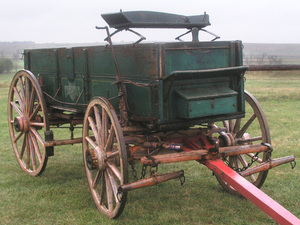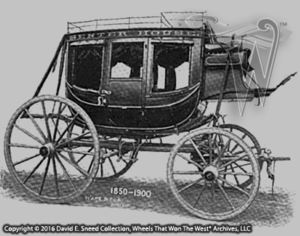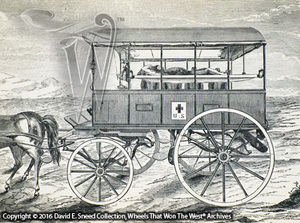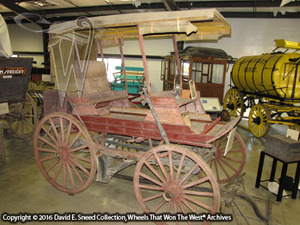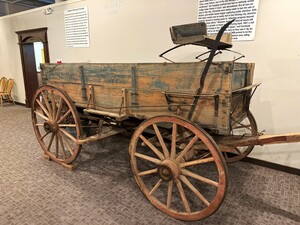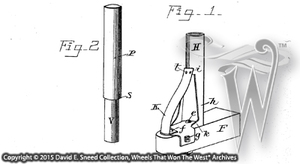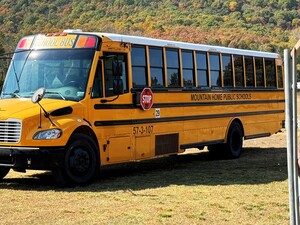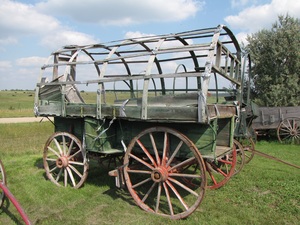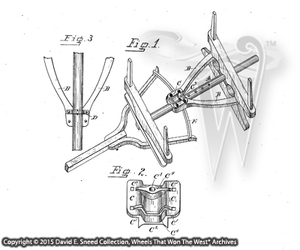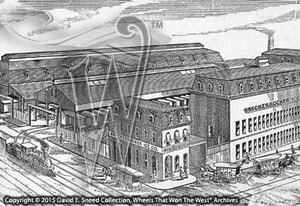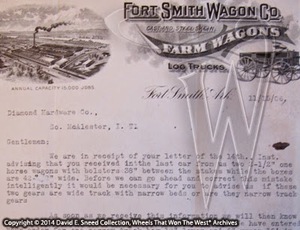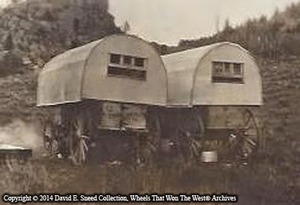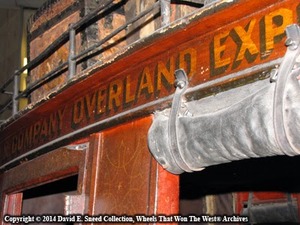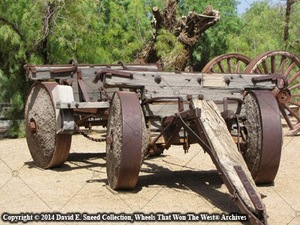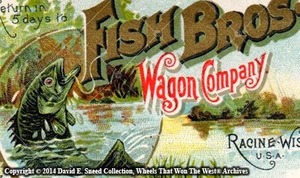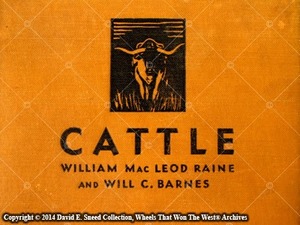One of the most common questions I'm asked is, "Where can I find a book that will tell me everything I need to know about America's early wagons and stagecoaches?" It's an understandable query but the answer can be a bit overwhelming; not because there isn't a solution but, rather, the explanation covers a lot of ground. The short answer is 'no,' there is not a single book that can supply all there is to know about the makers and brands in this industry. Why? Because, the scope of this subject is truly massive. We're talking about a trade that existed in the U.S. for over two hundred years. Combined with tens of thousands of individual makers and repairers in addition to the thousands of support businesses involved, there is a lot to try and soak up. Plus, a large percentage of the info is either near-impossible-to-find or is lost. Search engine pursuits can also come up empty - or even wrong! Well, what about just looking at a single, well-known brand? Surely uncovering everything about just one brand will be pretty simple. Well, those quests can also be daunting since the brand will have likely had dozens of different types of vehicles and the paint and construction styles will have evolved over the decades of the business. Plus, while our Wheels That Won The West® files likely have the most extensive records of many wagon companies, I know of no single source that includes all brands. The industry was just too large. And then there are the brands that only survived for a brief time, leaving almost no trace of their existence.
With the previous words serving as a good dousing to the fires driving your quest for knowledge, you may be thinking, 'What's the use in trying?' On the positive side, there's a lot that can be learned and there are some helpful books, although it's good to do comparison reviews with primary sources before accepting any writings as fact. It's why we've focused so heavily on those original pieces over the decades. The result has been that we've accumulated a sizeable number of primary sources and other research compilations in our library. It's always helpful to have in-depth materials available for corroboration. Ultimately, if you really want to learn, you will. If you're lightly curious, that's about the amount you'll retain as well. Of course, the same can be said for any area of study.
Let's stop for just a minute so I can share one more thing about the books I'll mention today. First, this is not a complete list - or even close - of the works that offer intriguing background material. Second, if you're looking for a good, casual read that will instantly transform your knowledge into that of an expert... you might want to pick a different hunt for history. This has nothing to do with your acumen or ability but everything to do with the vast - and I mean near limitless - scope of this subject. I've been studying this topic daily for over thirty years and still have much to learn. For me, though, that's a huge part of the fascination. It's a massive puzzle and landmark subject that literally drove America's westward expansion in the 1800's. Unfortunately, through time and neglect, a huge part of our wheeled past was lost. For more than three decades, this has been an intense search and rescue mission for us. It's led me to people, places, and circumstances that are worthy of their own stories. Along the way, I've been stuck, soaked, chased, conned, lost, led, and left. Sheer persistence, though, has helped us make some incredible finds; all while helping save history and debunking or confirming a world of beliefs and suppositions. Day in and day out, we're still making discoveries as the past slowly gives up its secrets.
So, there is good news for those seeking more details on America's early wagon and coaching industries. To help highlight a few resources and make some of this a little easier to digest, I've segmented a few books and organizations below. They run the gamut of general info to specific details. Again, this is only a small sampling of information that's available today. Enjoy!
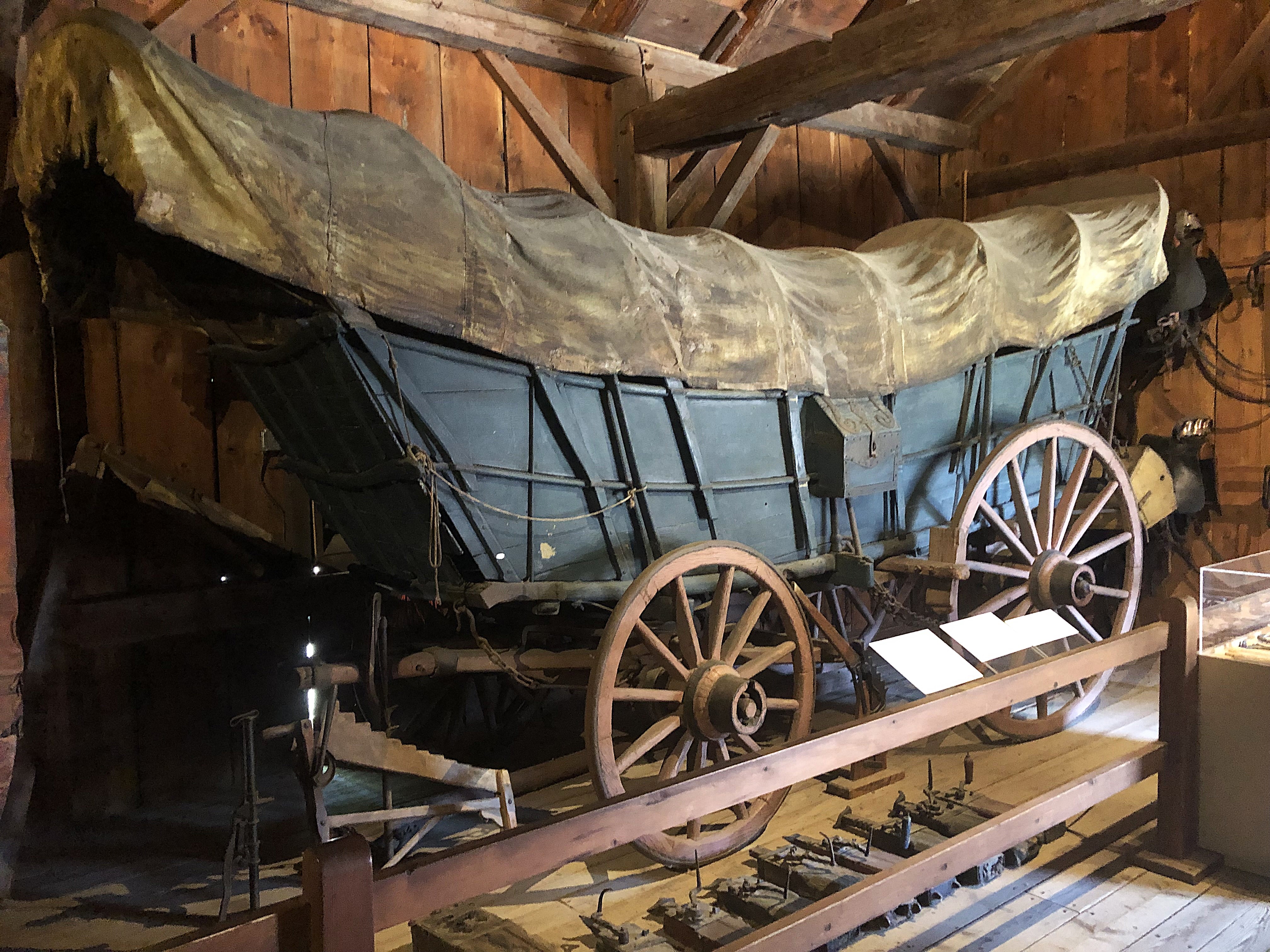
This original Conestoga freight wagon is on display at the Shelburne Museum in Shelburne, VT.
CONESTOGA WAGONS/FREIGHT WAGONS
Some of the earliest freight wagons in the U.S. are referred to as a 'Conestoga.' Many of these oversized and heavy, hand built machines have survived and can be seen in museums all over the U.S. Other types of freighters can include hefty farm wagons, mountain wagons, and tall-sided western freighters. Each of these can differ depending on the era built, maker, region of use, and particular needs. An organization that focuses on freight wagons is the National Stagecoach & Freight Wagon Association (NSFWA). A few books with additional info include...
Conestoga Six-Horse Bell Teams by John Omwake
Conestoga Wagon 1750-1850 by George Shumway & Howard C. Frey
Conestoga Wagon - Masterpiece of the Blacksmith by Arthur L. Reist
The Wagonmasters by Henry Pickering Walker
Wagons, Mules, & Men by Nick Eggenhofer
Wagons for the Santa Fe Trade by Mark L. Gardner
Commerce of the Prairies by Josiah Gregg
War Drums & Wagon Wheels (Story of Russell, Majors, & Waddell) by Raymond & Mary Lund Settle.
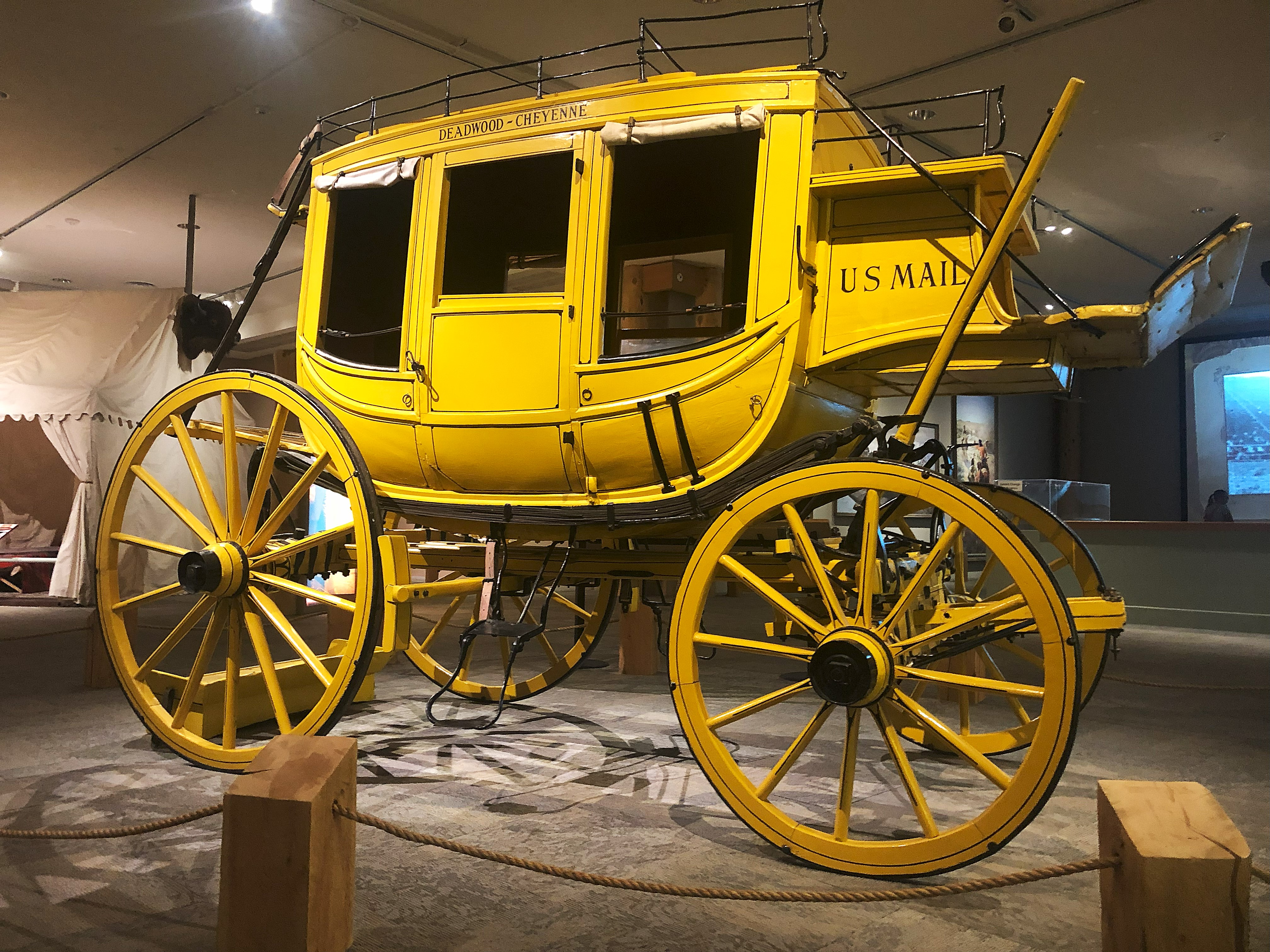
An Eastern Concord stagecoach design on display in Cody, WY.
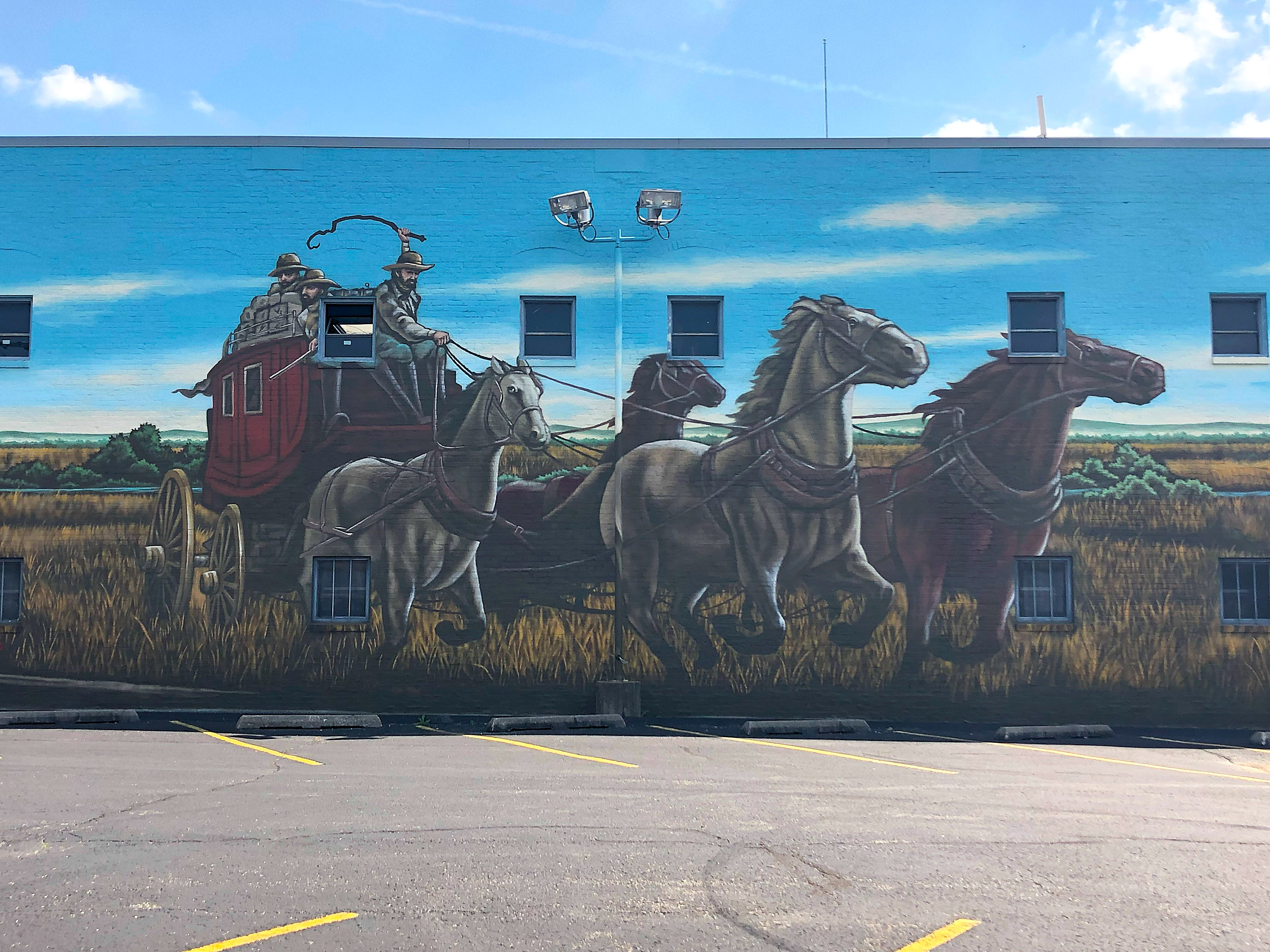
This massive mural is near the Pony Express Museum in St. Joseph, MO.
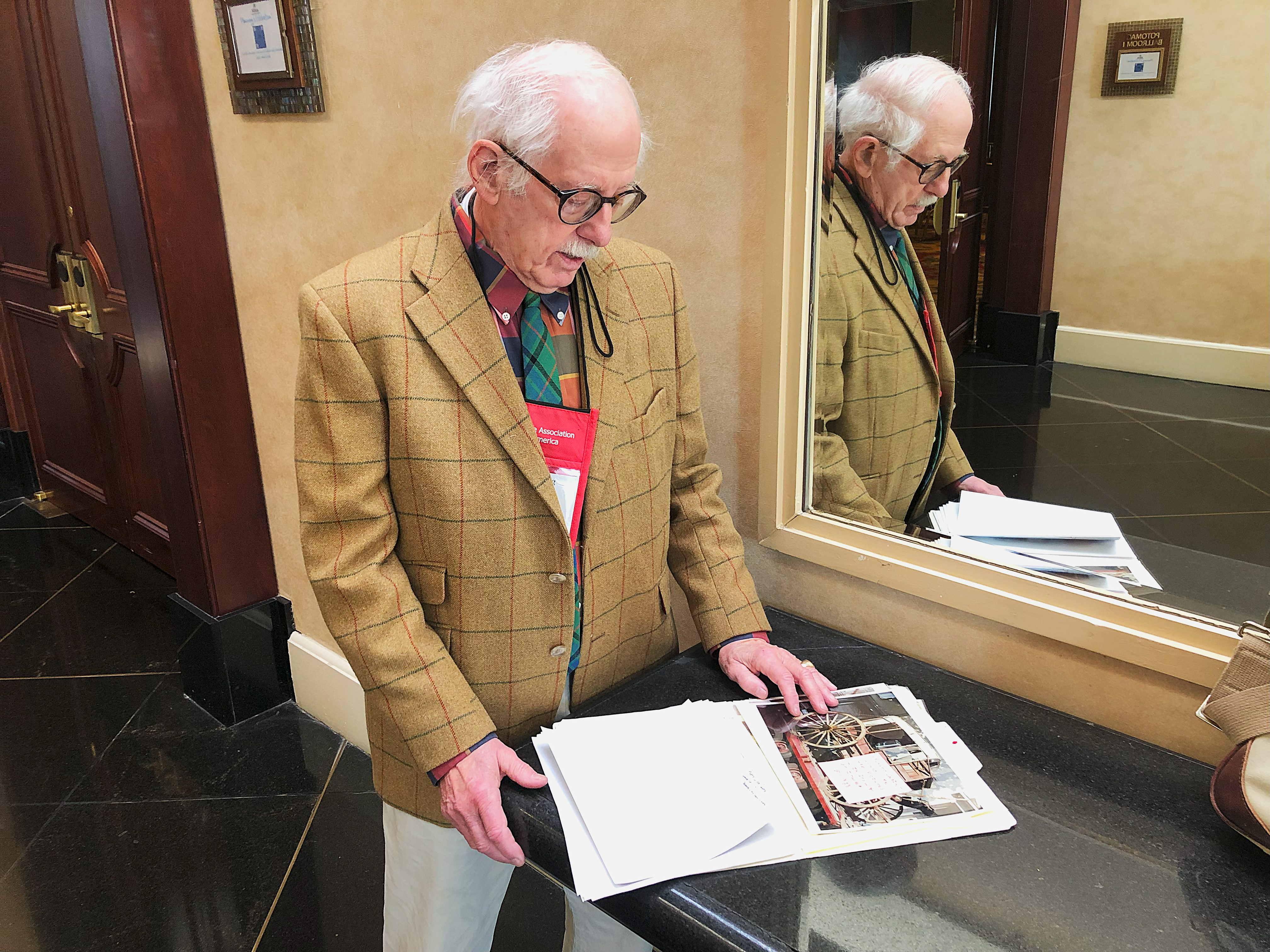
Good friend and fellow researcher, Ken Wheeling shares a few details on an Abbot-Downing Mud Wagon that ran in Montana.
STAGECOACHES
A great source of information related to the legendary Concord coaches and mud wagons is legendary researcher, Ken Wheeling. Ken's articles often appear in the Carriage Journal, a publication of the Carriage Association of America (CAA). Another good resource is the National Stagecoach & Freight Wagon Association (NSFWA). Stages, by nature of need and availability, often included a wide variety of horse-drawn configurations. From mud wagons and Concord designs to omnibuses, spring-hung bodies, and dead-axle wagons, passengers didn't always have a pleasant seat. Some books to consider are...
My Playhouse Was A Concord Coach by Mae Helene Bacon Boggs
The How To Book of Stagecoach Building by Jay D.Lambert
Via Western Express & Stagecoach by Oscar Osburn Winther
The Cheyenne & Black Hills Stage & Express Routes by Agnes Wright Spring
Ben Holladay, The Stagecoach King by J.V. Frederick
Time Well Kept, Selections from the Wells Fargo Corporate Archives (Wells Fargo publication)
Since 1852 (Wells Fargo publication)
Abbot, Downing Company - Catalog reprint
Concord's Waggon Men by Edward Rowse
The Overland Stage, A History & Guidebook by John M. Townley
Six Horses by Captain William Banning & George Hugh Banning
Stagecoach West by Ralph Moody
Throw Down The Box by George A. Thompson
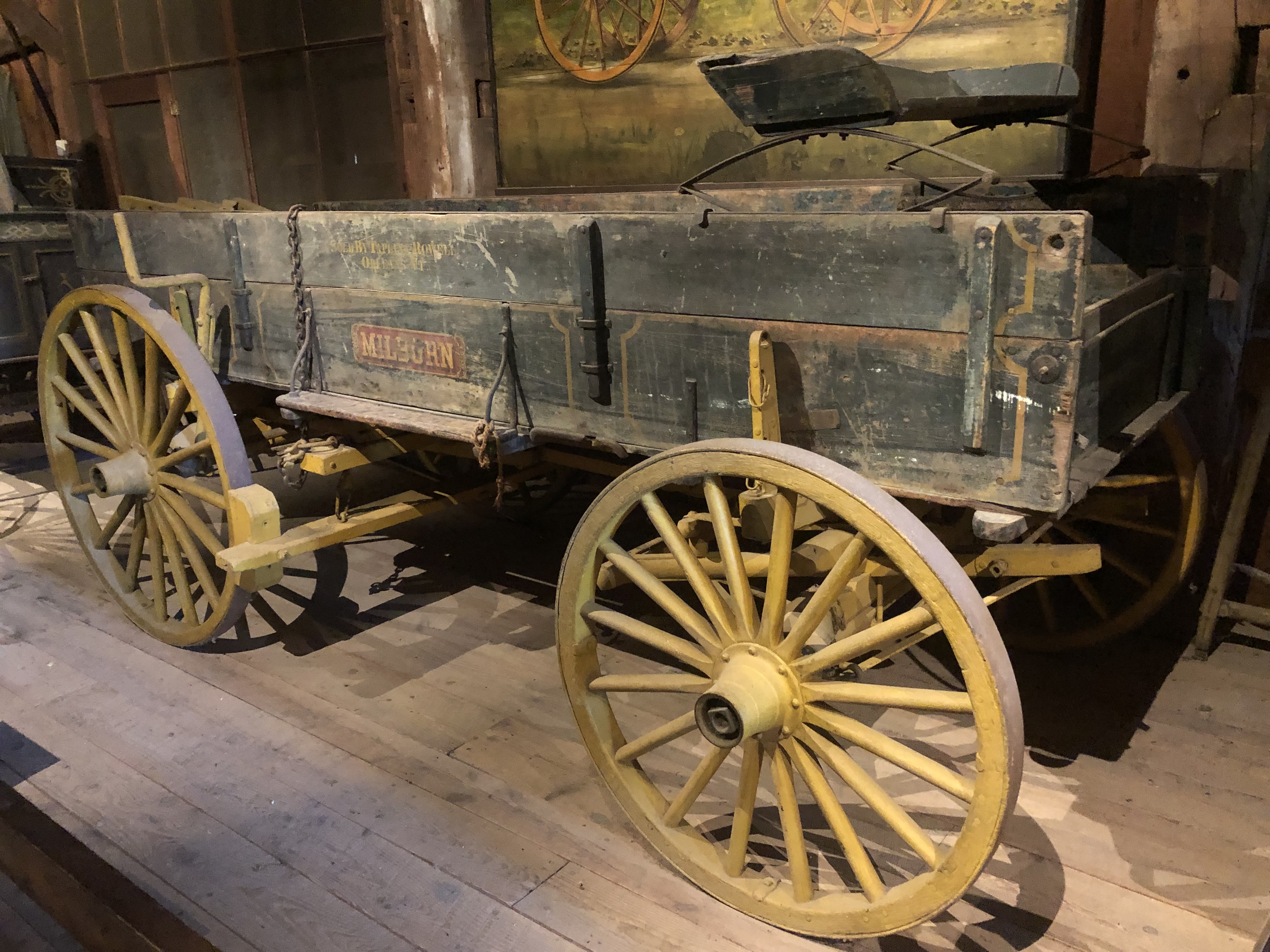
A Milburn brand (Toledo, Ohio) farm wagon with original box and repainted running gear.
FARM/EMIGRANT WAGONS
While this commonly seen wagon may look ordinary, it is anything but. From the engineering in a wheel to the patents governing almost every part of these pieces, the traditional farm wagon was constantly evolving throughout the 18th, 19th, and 20th centuries. There are a number of styles, designs, and unique features within these machines. If you're looking for a general overview of the makeup, uses, and experiences with this vehicle, below are a few considerations...
Beyond The Mississippi by Albert D. Richardson
A Journey to Ohio in 1810 by Margaret Van Horn Dwight
The Gruber Wagon Works by Carol J. Hunsberger
A Century on Wheels, The Story of Studebaker by Stephen Longstreet
Wagon-Making in the United States by Paul A. Kube
John Deere Buggies & Wagons by Ralph C. Hughes
Excavation of the Donner-Reed Wagons by Bruce R. Hawkins & David B. Madsen
The Old Reliable, The History of the Springfield Wagon Company by Steven Lee Stepp
Springfield Wagons, Catalog #41 Reprint
Numerous other reprints of wagon maker catalogs
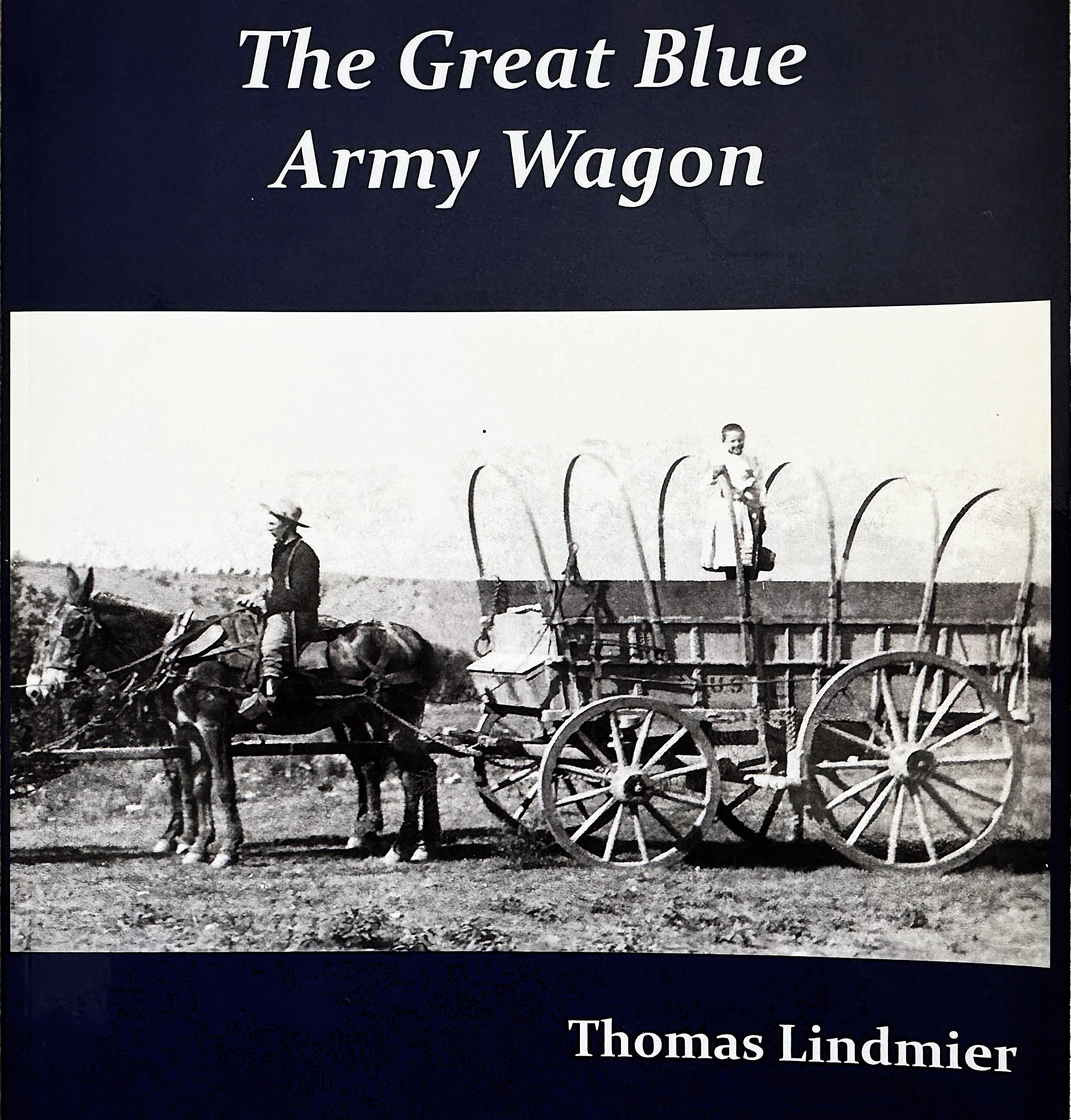
MILITARY WAGONS
My good friend, Tom Lindmier, authored a book several years ago called, "The Great Blue Army Wagon." It's a great resource and helpful in navigating a world of misdirection and hearsay. There are a good many other books covering cannons, Gatling guns, ambulances, and other military vehicles. Among them are...
The Great Blue Army Wagon by Thomas Lindmier
Horse-Drawn Ambulances by Carriage Museum ofAmerica
Ambulance Wagon by Thomas W. Evans, M.D. (rare)
Hardtack & Coffee by John D. Billings
Gun Carriages; An Aide Memoire to the Military Sciences
Artillery & Ammunition of the Civil War by Warren Ripley
The Gatling Gun Notebook by James B. Hughes
The Army Moves West by Robert A. Murray
A Treatise of Artillery by John Muller
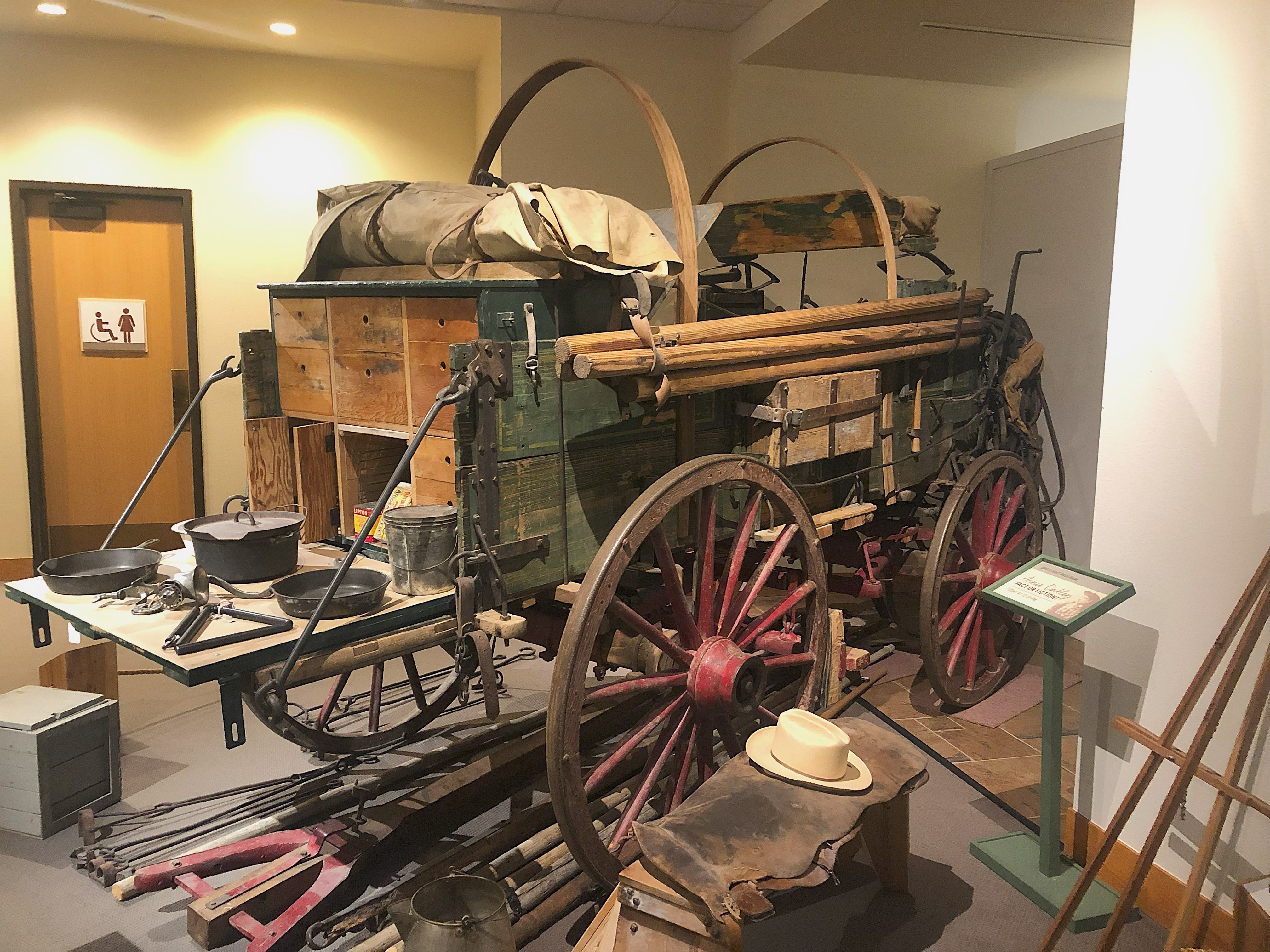
An original chuck wagon built on a Columbus brand box and running gear. Note the tire rivets.
CHUCK WAGONS & CATTLE DRIVES
From competitions and meetings to their website and social media presence, the American Chuck Wagon Association (ACWA) has a wealth of information related to historic chuck wagons. Other books with chuck wagon details include a few below. I've also written a number of blogs related to chuck wagons.
Cattle by William Mac Leod Rane & Will C.Barnes
The Cowboy At Work by Fay E. Ward
Cowboys by John Eggen
The Day of the Cattleman by Ernest Staples Osgood
Trailing The Cowboy by Clifford P. Westermeier
Cowboy's Lament by Frank Maynard
Great American Cattle Trails by Harry Sinclair Drago
American Cattle Trails, East & West by Marian T. Place
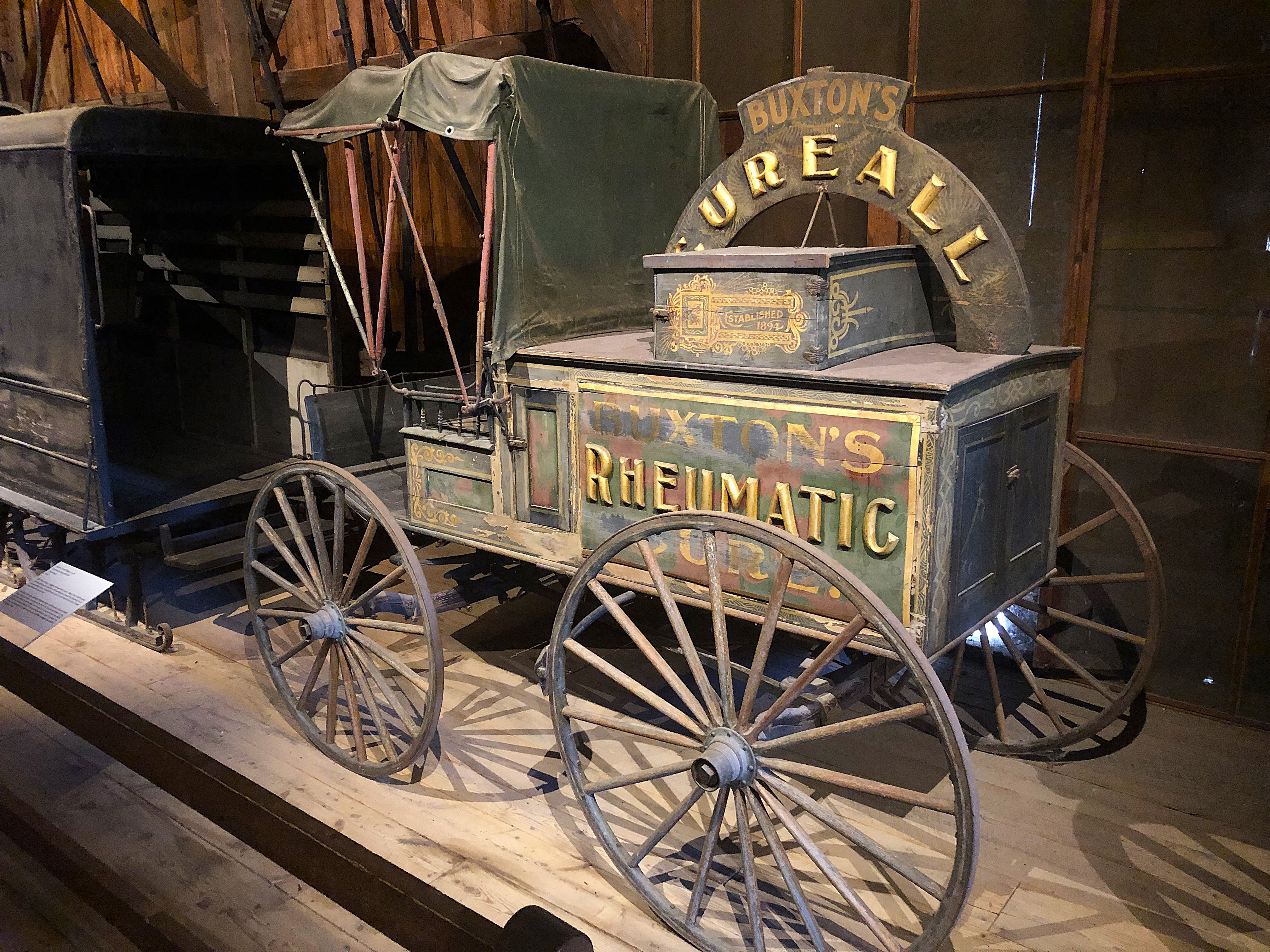
Business wagons came in all sizes and types. This peddler wagon has been heavily customized as a promotional vehicle.
BUSINESS WAGONS
This category can cover everything from bread, milk, beer, and grocery wagons to mail, livery, ice, peddler, and other commercial vehicles. It's a vast area. Below are just a few publications that can help shed light on this subject...
Horse-Drawn Commercial Vehicles by Don H.Berkebile
Horse-Drawn Funeral Vehicles by Carriage Museum of America
Hitch Wagons for City Driving by Carriage Museum of America
The Marshall Collection, Horse-Drawn Commercial Vehicles by Ken Wheeling
World On Wheels research publications by the Carriage Association of America (CAA)
Individual articles published in the Carriage Journal magazine (CAA)
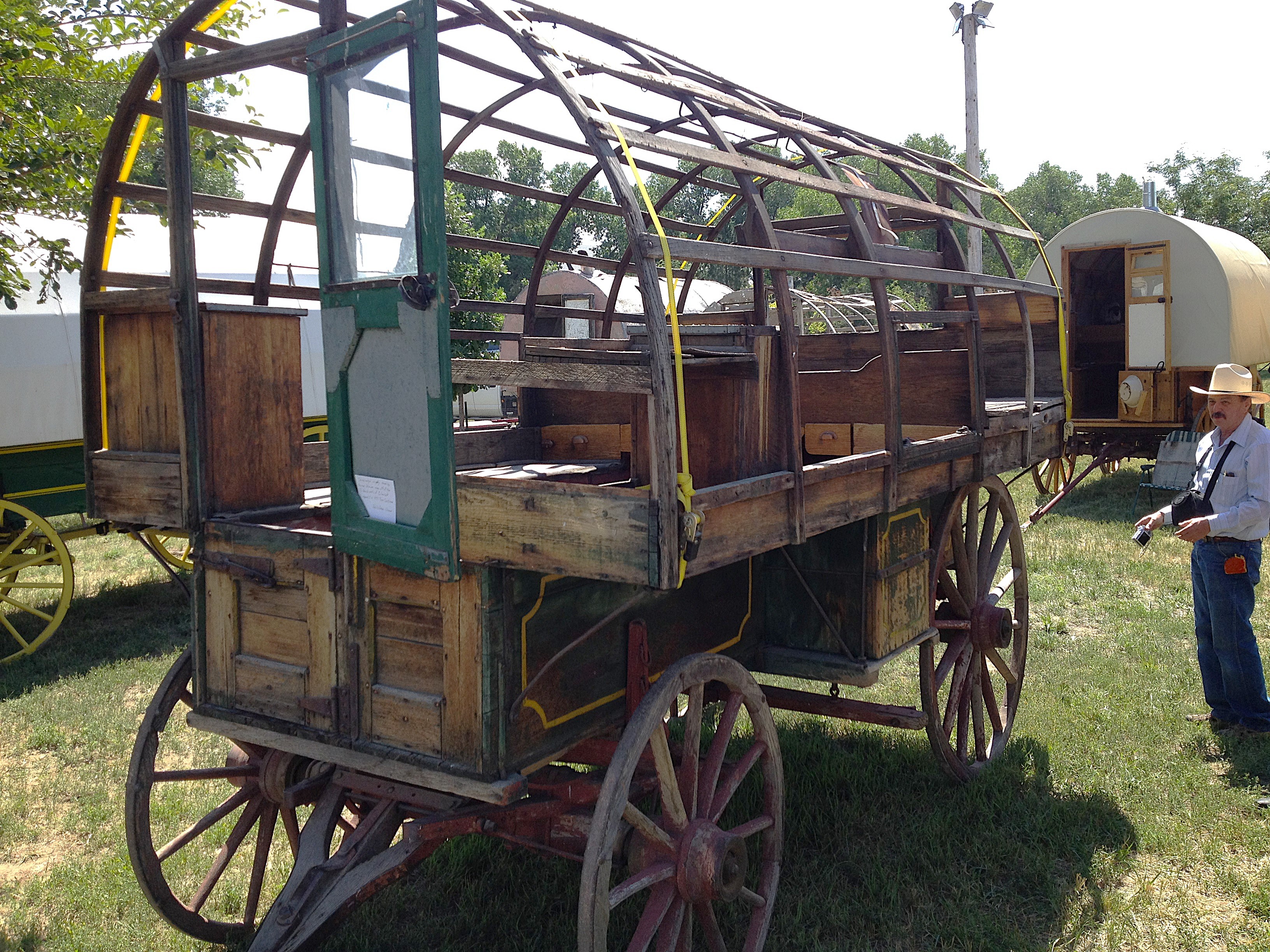
Tom Lindmier reviewing an original Sheep Camp wagon in Douglas, Wyoming.
SHEEP CAMP WAGONS
Several books have been published on Sheep Camp wagons and many western museums will also often have at least one Sheep Camp. Those are good places to visit. Old Trail Town in Cody, WY, the Buffalo Bill Center of the West in Cody, WY, the Museum of the Rockies in Bozeman, MT, the Wyoming Pioneer Memorial Museum in Douglas, WY, Cheyenne Frontier Days Old West Museum in Cheyenne, WY, and the Range Riders Museum in Miles City, MT are just a few museums with intriguing Sheep Camp wagons. You can find additional books in a number of online locations, including www.hansenwheel.com
Author, historian, collector, curator, and early vehicle enthusiast, Tom Lindmier, has been accumulating information for ages on these machines. With our own Wheels That Won The West® research and a wealth of running gear details in our archives, Tom and I have discussed the possibility of collaborating on a Sheep Camp book as well.
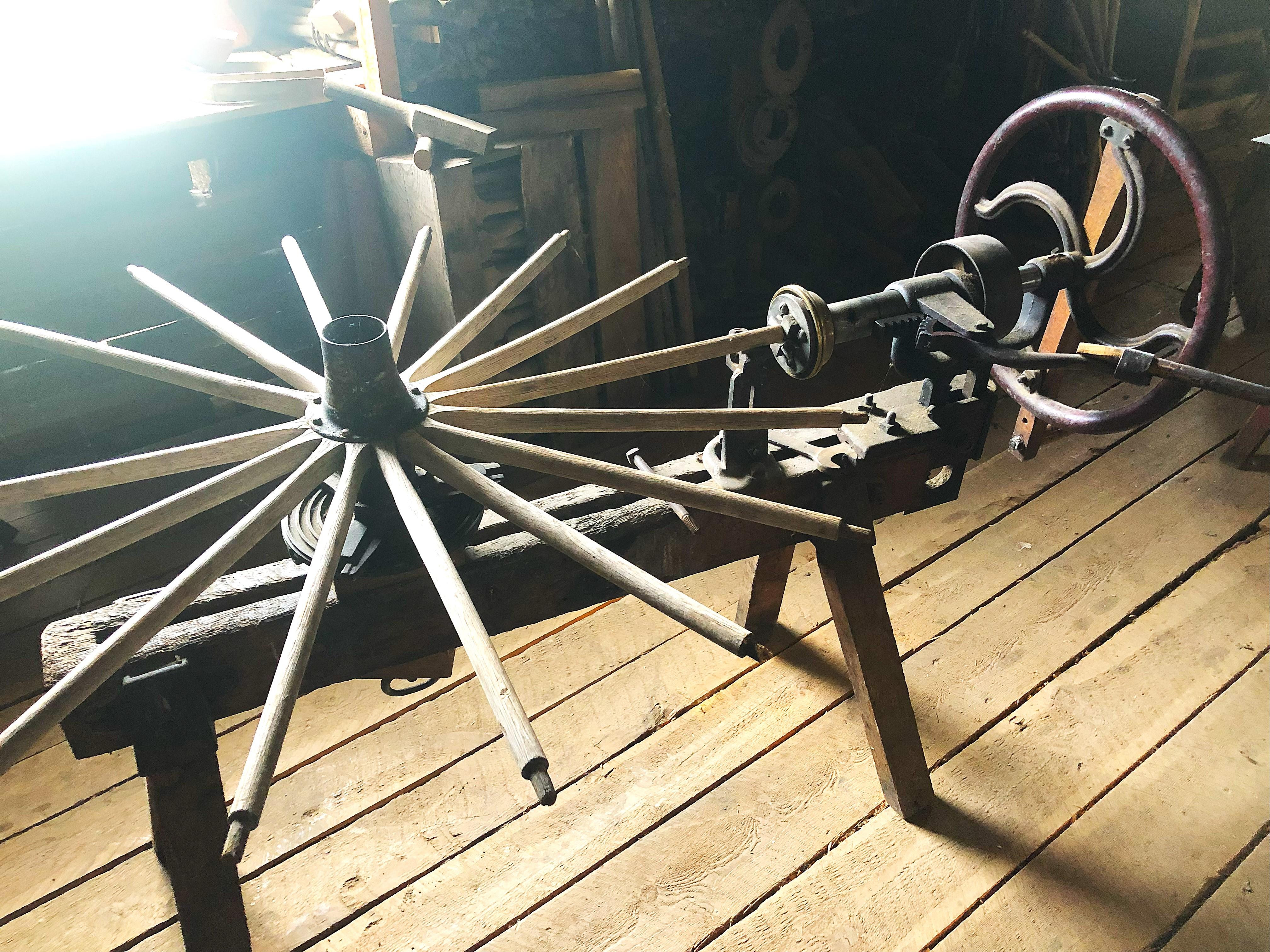
This image shows an early spoke tenoning machine in Nevada City, Montana.
INDIVIDUAL DESIGNS, PATENTS, PROCESSES, & GENERAL OVERVIEWS
Some of the best places to get a deep dive on the literal mechanics of the vehicles and industry are by attending lengthy presentations sponsored by the National Stagecoach & Freight Wagon Association, American Chuck Wagon Associaion, Carriage Association of America, the Kaw Mission Council Lecture series, Oregon-California Trails Association, Santa Fe Trail Association, and others. I try to give folks a little heads-up within these writings of places that I'll be speaking as well. Additional details can be gleaned by digging through early trade publications like The Hub, Carriage Monthly, and Blacksmith & Wheelwright. Below are a few more resources for overviews of this industry...
Horse, Mule, Grizzly, Indian, Buffalo Wrecks of the Frontier West by Mike Stamm
Conservation & Restoration of Horse-Drawn Vehicles by the Carriage Museum of America
Carriage Terminology: An Historical Dictionary by Don H. Berkebile
A Historical Guide to Wagon Hardware & Blacksmith Supplies by Towana Spivey
Carriage & Wagon Axles for Horse-Drawn Vehicles by the Carriage Museum of America
Wheels, Wheels, Wagons & More by Melvin L. Dewitt
The Carriage Trade by Thomas A. Kinney
The Harness-Maker's Complete Guide by C.C.Martin
The Complete Carriage & Wagon Painter by Fritz Schriber
The Complete Guide to Blacksmithing (Bonanza Books)
The Prairie Traveler by Randolph B. Marcy
The Navigator (1814 Traveler's Guidebook)
American Horse-Drawn Vehicles by Jack D. Rittenhouse
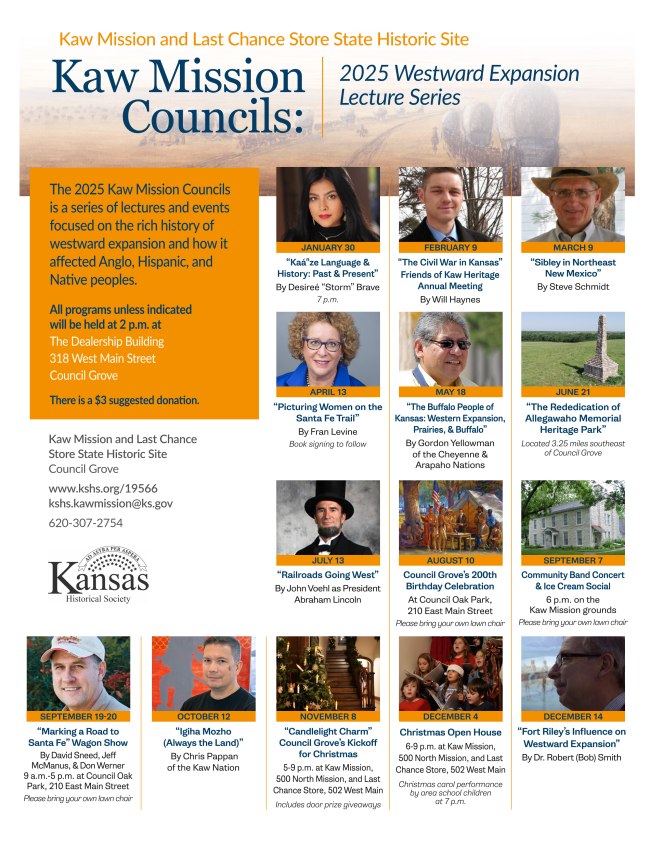
The Kaw Mission Council's lecture series includes a diversity of topics, including a focus on early wagons September 19-20, 2025.
Of course, our Wheels That Won The West® articles, blogs, and website also offer a wealth of information related to all of the topics above. Most of the countless, original images from our collection don't appear on our website, but some do make it to the lengthy presentations we provide. With that said, I'm scheduled to participate in several presentations this year, including an outdoor event in Kansas in September. That one will take place in Council Grove and will likely include a number of wagons from different collections across the country. It should be a great exhibition and opportunity to learn. You can check out a few details here... https://kclonline.com/events/2025-kaw-mission-councils-lecture-series-westward-expansion-2/
You can also contact Mark Brooks, Historic Site Administrator at Kaw Mission, at the phone number in the flyer posted above.
Hope your week is going well!
David
Ps 20:7
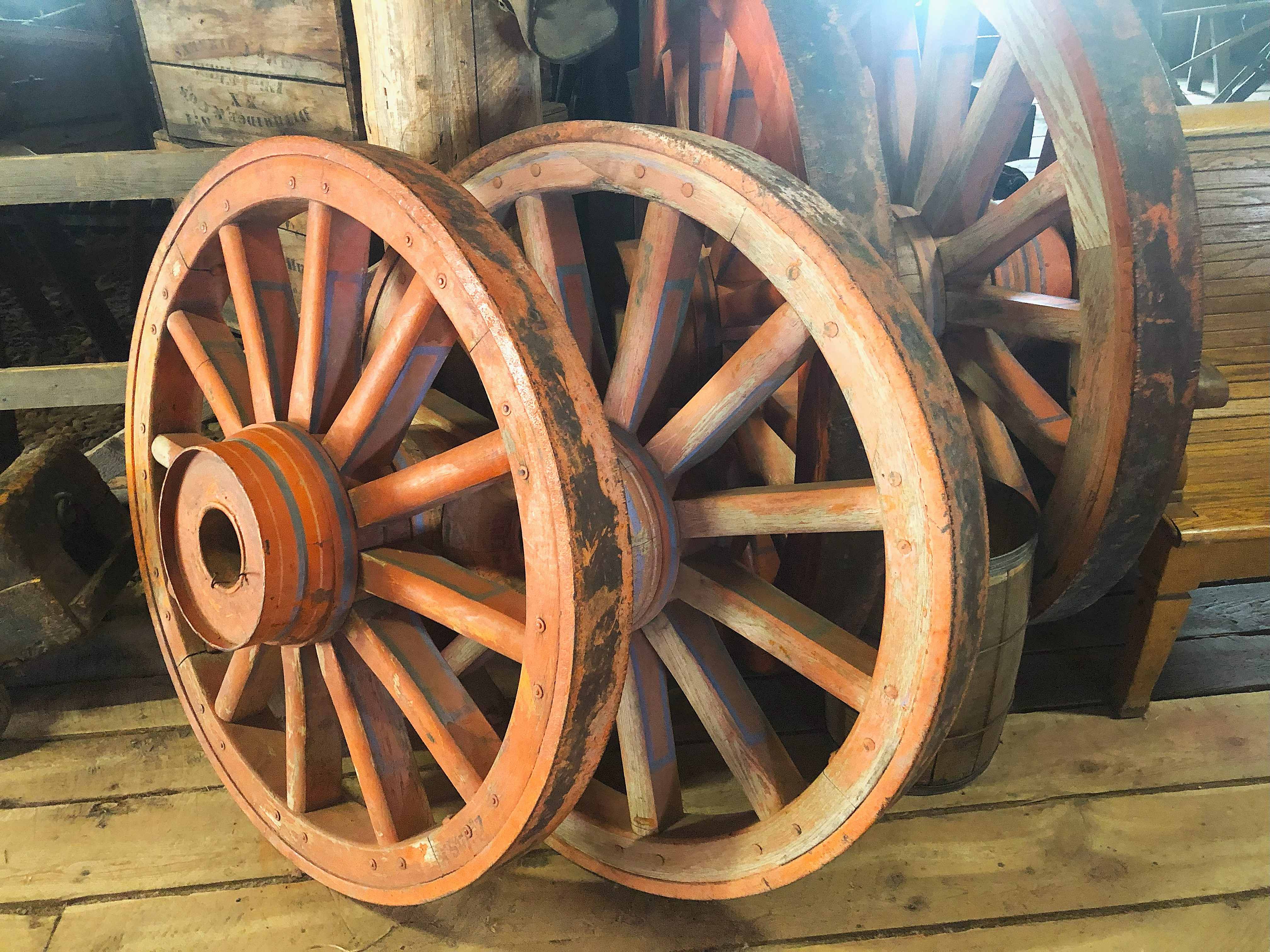
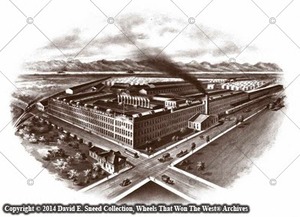
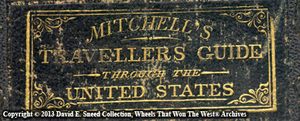


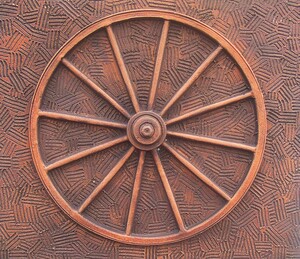
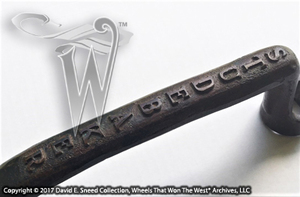
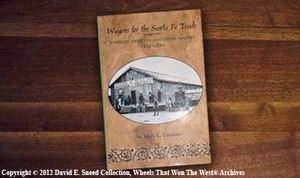
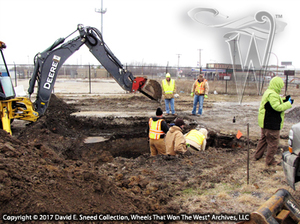

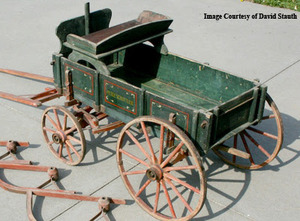

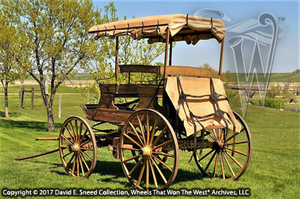
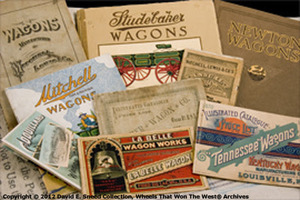
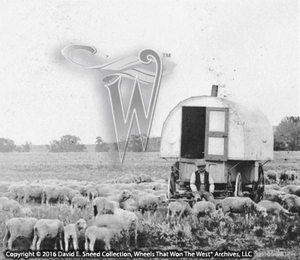


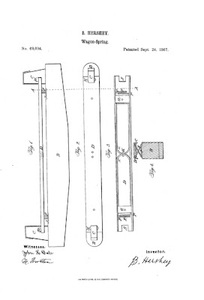
.jpg)
